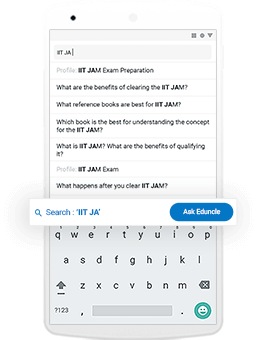Time management is very much important in IIT JAM. The eduncle test series for IIT JAM Mathematical Statistics helped me a lot in this portion. I am very thankful to the test series I bought from eduncle.
Nilanjan Bhowmick AIR 3, CSIR NET (Earth Science)- IIT JAM
- Chemistry (CY)
Is bcc same as abab arrangment ?
is bcc same as abab?..............................................................
- 0 Likes
- 4 Comments
- 0 Shares
-
![comment-profile-img]() >
>
-
![comment-profile-img]() >
>
-
![comment-profile-img]() >
>
-
![comment-profile-img]() >
>
Do You Want Better RANK in Your Exam?
Start Your Preparations with Eduncle’s FREE Study Material
- Updated Syllabus, Paper Pattern & Full Exam Details
- Sample Theory of Most Important Topic
- Model Test Paper with Detailed Solutions
- Last 5 Years Question Papers & Answers
Sign Up to Download FREE Study Material Worth Rs. 500/-










 >
>
 >
>













Priyanshu kumar
CCP stands for cubic closed packing , FCC is for face centered cubic structure… Now , HCP and CCP are one of the forms in which a cubic lattice is arranged and FCC is one of the types of unit cells(in general). When we place the atoms in the octahedral voids the packing is of ABCABC.. type.This is known as CCP. Now sometimes we also call it as face centered closed structure (FCC)But remember FCC can also stand for the unit cell (Face centered cell). *Hexagonal close packed (hcp). 12:12 coordination. ABAB layers. Cubic close packed(ccp). 12:12 coordination. ABCABC layers. Body centred cubic (bcc) 8:8 coordination. Face centred cubic (fcc) is just an alternate name for ccp.
Mainly for whole cubic lattice we use CCP and HCP